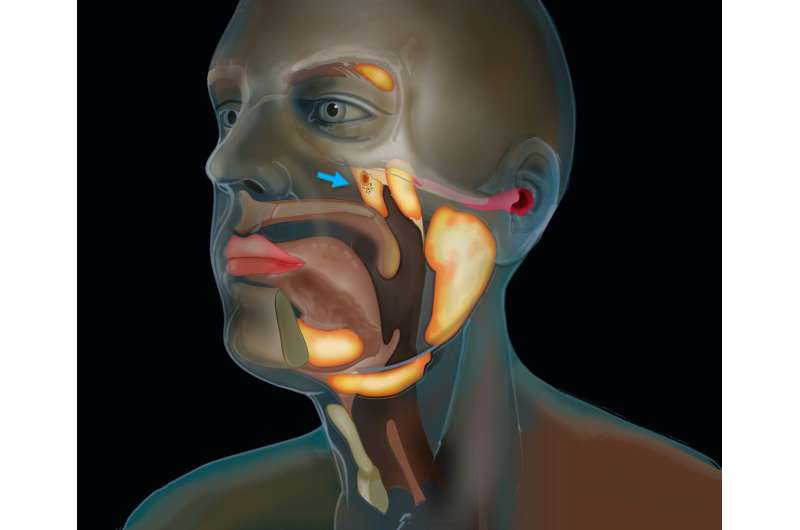Cancer researchers discover new salivary gland

Researchers at the Netherlands Cancer Institute have discovered salivary glands in a previously unknown location. This is potentially great news for patients with head and neck tumors: Radiation oncologists will now be able to circumvent this area to avoid potential complications. The research is forthcoming in Radiotherapy & Oncology.
Advanced technology allows scientists to visualize organs, cells and even in vivo molecules. But what are the odds of a new discovery? Imagine the surprise of radiation oncologist Wouter Vogel and oral and maxillofacial surgeon Matthijs Valstar, who were studying a new type of scan as part of their research when two unexpected areas lit up all the way in the back of the nasopharynx, which looked similar to known major salivary glands.
At the Netherlands Cancer Institute, Vogel and Valstar investigate the side effects radiation can have on the head and neck. The scans they studied highlighted salivary glands through the use of a marker in order to spare them during treatment.
"People have three sets of large salivary glands, but not there," Vogel explains. "As far as we knew, the only salivary or mucous glands in the nasopharynx are microscopically small, and up to 1000 are evenly spread out throughout the mucosa. So, imagine our surprise when we found these."
In collaboration with their colleagues at UMC Utrecht, they discovered that all 100 people whose scans they studied had a set of these glands. These patients had a new type of scan done for prostate cance treatment, called PSMA PET/CT scanning. Salivary glands show up clearly on this kind of imaging.
Valstar says, "The two new areas that lit up turned out to have other characteristics of salivary glands, as well." This was confirmed in the tissue of two human bodies they studied together with their colleagues at the Amsterdam UMC. "We call them tubarial glands, referring to their anatomical location."
Trouble speaking
Patients with head and neck cancer, including tumors in the throat or tongue, are treated with radiation therapy. "Radiation therapy can damage the salivary glands, which may lead to complications," says radiation therapist Vogel. "Patients may have trouble eating, swallowing or speaking, which can be a real burden."
Radiation of these previously undiscovered glands can also go hand in hand with these complications. In collaboration with their colleagues at University Medical Center Groningen (UMCG), the researchers analyzed the data of 723 patients who had undergone radiation treatment. Their conclusion: The more radiation delivered to these new areas, the more complications the patients experienced afterwards, similarly to what happens to known salivary glands.
This means that the discovery is not only surprising, but it could also be a benefit to cancer patients. "For most patients, it should technically be possible to avoid delivering radiation to this newly discovered location of the salivary gland system in the same way we try to spare known glands," Vogel concludes. "Our next step is to find out how we can best spare these new glands and in which patients. If we can do this, patients may experience less side effects which will benefit their overall quality of life after treatment."

















